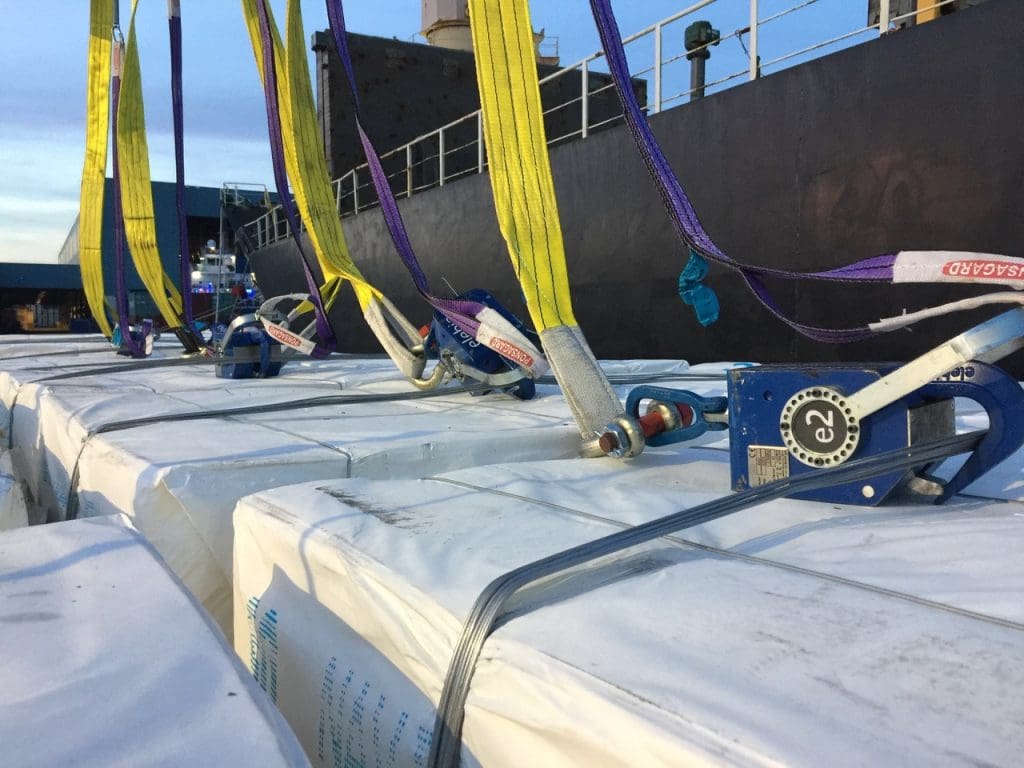Paper Pulp Handling
19 April, 2017 - Editorial Team
Paper Pulp Handling
From one the most modern terminals of the Port of Amsterdam, dedicated to logistics, storage and distribution of cargo, 1000 tonnes of wood/paper pulp were manoeuvered and loaded to a ship’s hold using the elebia evo2 crane hook. The process consisted in loading the cargo with a spreader with ten evo2 automatic hooks, the smallest of the range of automatic hooks with a capacity of up to 2.500 kgs. per hook, instead of the traditional spreader with a pneumatic system.
The 2T paper pulp bundles were wrapped with seven units of 2mm. extremely tensed and non-manipulated metal wiring. Every single bundle was handled by one unique operator. A spreader was placed above the load, with the hooks hanging by two slings, one standard, the other extendible. The operator was positioned on top of the bundles, using the standard sling as support while engaging the hooks manually. The extensible sling avoided the operator having to manipulate any kind of weight whatsoever. With this innovative solution, the time spent loading and unloading the cargo was reduced by more than 15%. Only one operator was used for this process instead of the 2 traditionally needed using the traditional spreader with a pneumatic system.

evo2 Automatic Crane Hook
For the last two years, the R+D team from elebia has developped a revolutionary product. The evo2 crane hook brings an innovative solution to the traditional spreader with a pneumatic system. It is way safer and quicker, more cost-effective and specially, highly more productive. With the elebia automatic hooks, stevedores will be better positioned during the engagement of the hooks to the cargo, always standing and without need to bend over or crouch. Visibility over their surroundings improves to the point where risks, impacts against hooks or the spreader and injuries are drastically reduced.
The elebia automatic hooks are powered by a removable and rechargeable battery and its simple mechanism makes them maintenance free, enhancing productivity up to limits never reached before with the pneumatic spreaders, as a 3 hour charge allows for 5.000 cycles (loading and unloading). In this sense, in the unlikely scenario of a hook malfunction, it will not be necessary to stop the full operation (as with traditional spreaders) but only replace the faulty unit with a spare one: no pressure leaks, no pipes breaking, no nitrogen tank consumption, no compressor, no valves, no sensors… Just one battery. One hook. Learn about our entire range of automatic crane hooks.
Check out the whole process and view the video below.



